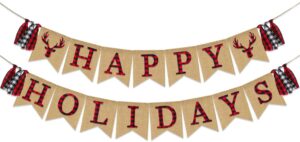
“We Are Not a Dressing Family”
By Clay Hightower, LICSW
This year, I joined my partner’s family for Thanksgiving for the first time, after doing it with my family the previous year. I had done Thanksgiving with different parts of my family every year with the exception of the last few years. Over the years, a few simple traditions had developed within my family, mostly around who made which dishes, whose house we would eat at, and what would be on the television in the background while it all happened. Even though these traditions are simple and fairly ubiquitous, they are the things I would always look forward to as the day approached. So, when my partner and I started talking about how they typically do Thanksgiving and what traditions they may have, I knew it would not be the exact same. However, my heart almost stopped when I heard her say something completely unexpected.
To many southerners, these words are quite confusing. When I asked my partner about their clear lack of good side dish choices, she could not explain why dressing was not a typical part of their Thanksgiving. She stated that they had it at various Thanksgivings over the years, but it was never a staple and nobody seemed to miss it that much. But to me, it could not be more different. It was far enough outside of my view of Thanksgiving that I decided on the spot to make dressing and bring it to the gathering. Even as I shared this conversation with my family members, one of whom I later got my dressing recipe from, they mirrored my response.
On the surface, this can seem insignificant, but it is directly tied to my memories and experiences at Thanksgiving. When I think about dressing at Thanksgiving, of course my mouth starts to water, but all of these memories come rushing back to me. I have memories of my grandmother making almost all of the food every Thanksgiving and refusing most help. I have memories of people sneaking bites of the meal under the table to family dogs. I have memories of my young cousin spilling the secret that they were adding another member to the family. These memories allow me to feel closer to my family members that I do not get to spend the day with, whether it’s this year or ever again. All of this means that these symbols in our life, like the dressing, are chock full of meaning and importance. And also, carbs.
If I allow myself to slow down long enough, it is easy to see the meaning and importance behind many holiday traditions. After all, humans are meaning making creatures. Part of our brain’s primary function is to filter through information, try and make sense of it, and then put it in the correct place. Most of the time, this function serves the purpose of helping us understand our relationship to ourselves, our loved ones, and the outside world. These holiday symbols and traditions are just our own unique ways of connecting us to the larger, more ubiquitous meanings of each celebration, like togetherness and gratitude for Thanksgiving.
As more opportunities for gathering and celebration approach, I now better understand the importance of my attention to these meanings. Without this attention, it’s easy to fall into a problem-solving, outcome-based approach to the holidays. I become more focused on just making sure the things happen like they are supposed to instead of allowing myself to be in the experience. I do not stop to rest and reflect until it is over, and then it is too late. It can lead me to feel less connected to others and to myself.
Unfortunately, I have also come to better understand the loss and grieving of these traditions, as relationships change or end. It can feel upsetting engaging in those old traditions trying to make it feel the same, or sometimes I just do not know if I can engage in the tradition. All of these factors can culminate in me feeling even more disconnected. So, as the holiday season marches on, I will continue to write more about our relationship with these meanings and how to engage in it as a conscious behavior that helps me feel more connected to myself and others. My hope is that it will be helpful to others in learning how to navigate what can be a wonderful or tumultuous time in our lives.

